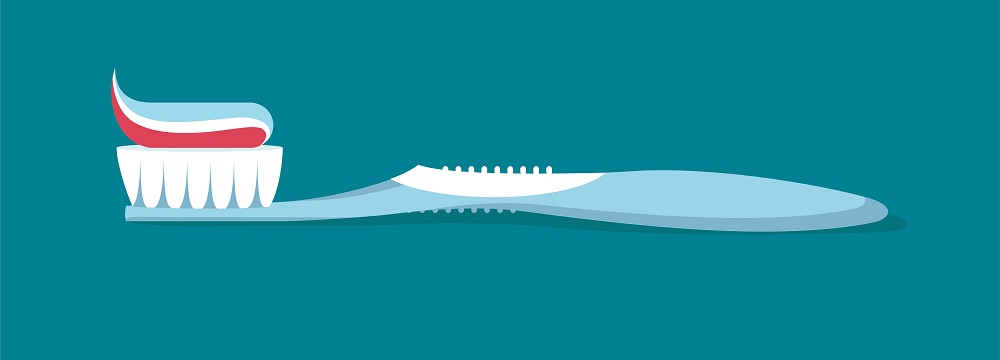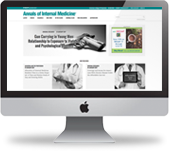
Take a bite out of HAP
Brushing teeth reduces hospital-acquired pneumonia (HAP) risk, and changes are needed to make this simple practice happen more regularly in the hospital.
Did you brush your teeth this morning? How about your kids? And your patients?
If the last of those questions was much less familiar than the others, you're not alone. But you may be underutilizing a simple tool to prevent hospital-acquired infections.
“Most people, including physicians and sometimes pulmonologists, that I speak to do not know the relationship between oral systemic health and the development of pneumonia,” said Dian Baker, PhD, RN, a professor of nursing at California State University in Sacramento. “If they do glance in the mouth, it's very cursory.”
This lack of attention is problematic, since “the bugs inside your mouth get into your lungs,” as infectious disease specialist Michael Klompas, MD, MPH, put it simply. “Hospital-acquired pneumonia is the most common health care-associated infection and crude mortality rates are 15% to 30%.”
The potential of brushing patients' teeth to combat these stats was recently quantified in a meta-analysis by Dr. Klompas, who is a professor at Harvard Medical School in Boston, and Selina Ehrenzeller, MD, from the University of Basel in Switzerland.
Reviewing 15 randomized trials, they found that, with toothbrushing, hospital-acquired pneumonia (HAP) risk decreased by a third and ICU mortality also dropped by almost 20%, according to results published in the February JAMA Internal Medicine.
Hospitalists don't have to do the brushing, but they play a key role in achieving the systemic changes necessary to make it a regular occurrence in the hospital, experts said.
Starting in the ICU
Most of the research on toothbrushing has been conducted in ICUs—only one trial in Dr. Klompas' review focused on non-ICU patients. One reason may be that it's easier to prove an effect in the patients most likely to acquire pneumonia in the hospital.
“If you're a high-risk patient, then an aggressive intervention is more likely to benefit you,” said Dr. Klompas. Toothbrushing in patients on mechanical ventilation was also associated with less time to extubation and shorter ICU length of stay in his review.
“That makes it more believable for me,” said Dr. Klompas, noting that pneumonia is a problematic outcome for research because the diagnosis can be subjective.
Aware of the link between the mouth and the lungs, most ICUs have been working for many years to fight the germs in ventilated patients' mouths, but their most common approach may not have been helping.
“The primary strategy that's been used in hospitals to decrease microbes in the mouth has been the addition of chlorhexidine to oral care regimens. But over the past decade, a series of studies have shown that it's not clearly effective and perhaps may be harmful,” Dr. Klompas said.
Mortality was actually increased if patients on mechanical ventilation got oral care with chlorhexidine, he and colleagues found in a 2014 meta-analysis.
Based on such data, chlorhexidine oral care was removed from guidelines, but it was not immediately replaced with any intervention. “They left a bit of a gap: What were we supposed to do? How do we manage this?” said Dr. Klompas.
Enter toothbrushes, which had been tested in some small studies.
Going bigger, in 2017, researchers in Toronto gradually had six ICUs replace chlorhexidine with an oral care bundle that included twice-daily toothbrushing. “We felt badly that we were potentially exposing some patients to additional poor outcomes [with chlorhexidine],” said Craig Dale, PhD, RN. “We thought oral care, at least in our ICU patients, was something that needed to be brushed up, pardon the pun.”
Dr. Dale, who is an associate professor at the University of Toronto in Canada, and colleagues found quite a lot of room for improvement after they launched the project. “It's a very different thing than brushing your own teeth to be brushing somebody else's teeth, particularly in a mouth full of tubes,” he said. The challenges are multiplied when disoriented patients react, by closing their mouths or biting, for example.
Neither doctors nor nurses are typically taught how to handle these issues. “The fact that many people in medicine and nursing have not received comprehensive oral health training as part of their prelicensure education creates a risk for our patient groups,” said Dr. Dale.
Despite these challenges, the project significantly increased toothbrushing among ICU patients from 36.7% to 72.6%, according to results published in Intensive Care Medicine in 2021. (Chlorhexidine de-adoption was easier, dropping from 61.4% to zero.)
The key to achieving such change is hands-on toothbrush training, according to Dr. Dale. “Previously, a lot of education on oral health in the hospital has been theoretical, a module or a set of slides,” he said. “What's really important in the training going forward is that there's observation and direct feedback to practitioners.”
That can mean bringing dentists, hygienists, and other experts into the hospital to provide education. “Frontline staff really wanted to talk to us about oral care and their challenges and their insecurities,” said Dr. Dale. “We have to brainstorm and actually have a really nuanced education around how to address those challenges.”
On the wards
Getting patients' teeth brushed outside of the ICU is a much less technical project, since most of them can do it themselves. “We find that about 80% of patients with some support and assistance—making sure the toothbrush is close by, that they have some water and something to spit in—can do this,” said Dr. Baker.
That process sounds simple, but in practice, it raises a lot of logistical questions, Dr. Klompas noted. “Do you have a toothbrush inside the hospital? Does the hospital provide one? Is the toothbrush that they provide any good?”
The answer to that last question is often no, said Dr. Baker, describing the “ubiquitous” hospital toothbrush. “It's very hard. The bristles fall out, and so the nurse gets a call to pull bristles out of a patient's teeth. Believe me, that toothbrush is never going to be given to that patient again.”
Other common inpatient oral care supplies also have flaws. “The so-called mouthwash is either mint water or very, very low-percentage antiseptic,” said Dr. Baker.
Hospitals could remedy this situation with better supplies, or patients could bring their own, as in a project by one payer for beneficiaries with planned hospitalizations. “Aetna sent them an oral care kit with a toothbrush, toothpaste, and mouthwash, an educational card, and a card to give to the nurse about why they needed their teeth brushed,” said Dr. Baker.
Raising patients' awareness of the benefits of brushing their teeth while in the hospital is a key component of these efforts, she believes. “When they don't feel well and just came out of surgery, it's pretty easy to say, ‘I don't feel like brushing,’” Dr. Baker said. “Most of us do oral care at home for fresh breath, white teeth, to prevent cavities, and it feels good to have a clean mouth. ... In the hospital, oral care is about keeping our lungs healthy.”
It's not only patients who need to learn that lesson, she added. A focus of her work is raising awareness of non-ventilator-associated hospital-acquired pneumonia (NV-HAP) in general and in relation to oral health.
“When we would try to discuss it with our colleagues and other professionals, they would tend to hear ventilator-associated pneumonia, and we would get this response, ‘Yes, it's on the list. We're doing something about it,’” she said. “We're saying, ‘No, this is the pretty healthy person who comes to the medical-surgical unit, supposed to stay for four or five days, and they end up getting hospital-acquired pneumonia, they go to the ICU, they get septic, and they die.”
Dr. Baker participated in one of the only studies to assess the effects of toothbrushing on NV-HAP. On one unit in the hospital, patients were each provided a high-quality toothbrush, toothpaste, and mouthwash, with a goal of oral care four times a day. Compared to a control unit, they had an 85% reduction in NV-HAP, according to results published in the American Journal of Nursing in 2021.
That small trial alone didn't provide enough evidence to show a significant effect of toothbrushing outside the ICU in Dr. Klompas' review. “It was not adequately powered to say that's a definite signal,” he said. “But, at the end of the day, toothbrushing is good for the entire population. It's good for me, it's good for my kids, and so inside the hospital, why should you give up your oral hygiene?”
Dr. Baker noted that no definitive risk factors for NV-HAP have been identified, and increasing brushing among all medical patients has worked in her anecdotal experience. “In each case that we've done it, we have had successful results that pneumonia rates have gone down,” she said. “It's the most promising thing we have, and we have to do something.”
Making it happen
It's specifically nurses who have to do the work of getting patients to brush their teeth, and amid their many other duties, they often don't give it much attention, Dr. Baker noted. “It simply falls to the bottom of the nursing priority list.”
Hospitalists can bump toothbrushing up the list by showing an interest, the experts agreed. “They need to generate discussion about the topic on rounds, specifically when there's particular oral care issues, but just generally helping the team understand that in fact this is part of high-quality care,” said Brian Cuthbertson, MD, an author of the 2017 Canadian study and professor of anesthesiology and pain medicine and critical care medicine at the University of Toronto.
“Put it on their daily rounding,” agreed Dr. Baker. “‘Has oral care been done on my patient?’”
It's particularly important that the medical team be informed of any problems that arise with toothbrushing, Dr. Dale said. “Suddenly, when the patient has pneumonia, to learn that the nurses couldn't provide oral care for the last five days, that's too late.”
Hospitalists can also increase the focus on inpatient oral care by adding an assessment of the mouth and teeth to their admission routine. “While we would think that this is part of the admission physical, it's often overlooked,” Dr. Baker said.
When you look, you might be disturbed by what you find. “In the United States, more than 40% of people 30 years of age and older have periodontal disease and 70% of adults over 65,” said Dr. Dale. “Assume that the people coming into your hospital and to your beds have active periodontal disease.”
Patients with a dental disease at baseline face risks besides pneumonia from their oral care being neglected in the hospital, Dr. Dale added. “People are losing their teeth after they leave the hospital, and that's a really important outcome.”
It's not one that you'll likely find on any of your hospital's quality dashboards, though. That's one of the biggest obstacles to improving inpatient oral care, but it could change in the future, the experts said. Dr. Baker has lobbied CMS to add NV-HAP to its hospital-acquired conditions program, which would then draw attention to the most effective prevention strategies, including toothbrushing.
“If you think about it, we spent years scoring hospitals based on their VAP prevention guidelines, and that included chlorhexidine. So if we can spend the last 20 years rewarding people for giving a treatment that doesn't work, surely we can also count oral health,” said Dr. Cuthbertson.
In the meantime, hospitalists can go ahead and put it on their own lists of high-quality care to ensure, recommended Dr. Klompas.
“Just like we consider it our business to prevent other kinds of health care-associated infections by minimizing the use of Foley catheters, removing central lines, practicing antibiotic stewardship, washing hands, etc., here's another simple and familiar strategy we need to make sure happens, because it can have a real impact on our patients' outcomes,” he said.



